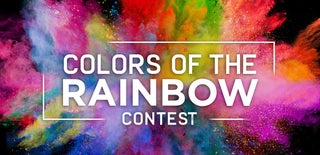Introduction: How to Paint an Indigo Bunting
Indigo buntings are related to cardinals. During the breeding season the males plumage becomes a brilliant blue/indigo color. They can be found from southern Canada to Mexico depending on the season.
Enough about the bird, let's paint!
Step 1: Gather Your Materials
You'll need paper, a pencil, an eraser, a ball point pen, brushes, watercolors, guache (optional - this is a fancier kind of water color), and Dr. Ph Martin's Bleed Proof White.
You will also need a reference photo.
My reference photo that I used for this instructable can be found here
but you can also do a google search for "indigo bunting"
Some people get hung up on types of paper, I personally like Strathmore watercolor paper, but I've also painted on sketch paper and multi media paper. You can experiment with what you like best.
Similarly, I get just as good (sometimes better) results from using a children's watercolor set. So don't worry about the brand of watercolors you have if they aren't professional or expensive.
As for the pen, I prefer uniball pens because they bleed slightly when I paint over them. I like the way I can blend ink into my paintings. If you are concerned that the bleeding may not work for your style, then make sure you use a different kind of pen that won't bleed. If you aren't sure you can test it on another sheet of paper.
Step 2: Pencil Sketch and Pen
Sketch out the indigo bunting with a pencil. Then take your ball point pen and go over the lines you want to keep.
Tip: If you are not too sure of your drawing skills you can trace your reference photo onto tracing paper and then use carbon or graphite paper to transfer the design.
Step 3: Erase
Once you have gone over the design in pen, let the pen ink dry completely. When you are sure it is completely dry, erase the pencil. If you don't wait for the pen to dry it can smudge.
Step 4: Test Your Colors
My watercolor set has a bunch of blues. On scrap paper, I tested the different colors so I could be sure I was using the colors that I was happiest with.
Step 5: Apply Water
Wet your brush and apply water to the paper inside the lines for the body of the bird. Do not yet do the wings or tail.
Step 6: Add Paint
Start adding some paint to the areas that you applied water.
Step 7: Paint
Paint the body, then the wings, tail, and twig. Fill in the beak with gray.
Step 8: Details
Once you have the body painted, you can start on the details. Wait for the paint on the body to dry, and then go back with dark black or pen to fill in the wings. Then on the body you can use a combination of white, gray and darker blues to add some texture to the feathers by painting tiny lines.
Step 9: Eye!
With the pen, draw a smaller white circle and then fill in the eye with black. the white dot will look like a reflection and give some life to the bird. I also like using the Bleed Proof White here to start outlining areas that need to be white.
The Bleed Proof White is very thick. To use it, dip your clean brush and wipe the paint off on a mixing surface. I use the inside lid for my watercolors. Dip the brush in water and add a drop next to the white and slowly combine the two until you have a smooth consistency.
Step 10: Last Details
Go back with a pen and darken anything else you want darkened. Fill in the feet. Make sure you like the feathers on the wings. I ultimately decided to smooth out the black.
Step 11: You Are Done!
All done! See, that was easy!
You can add a background if you like or just leave it as is.

Participated in the
Colors of the Rainbow Contest











